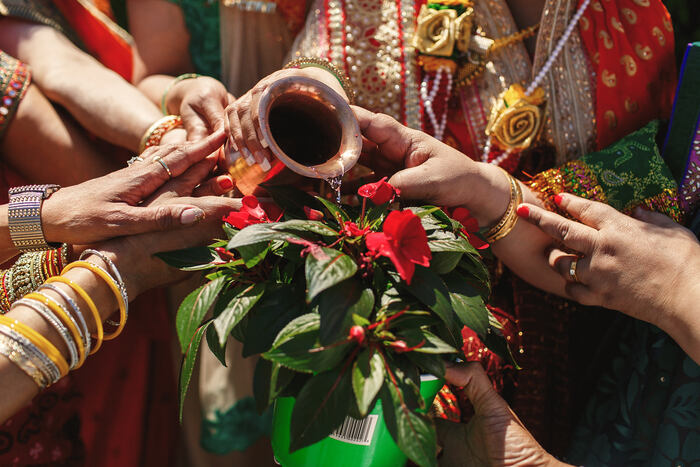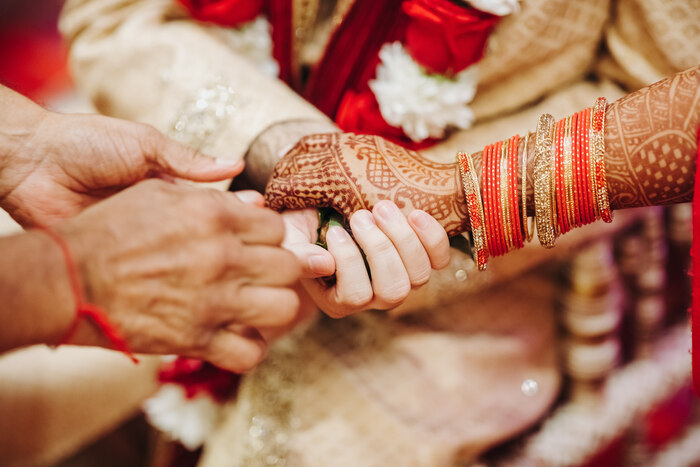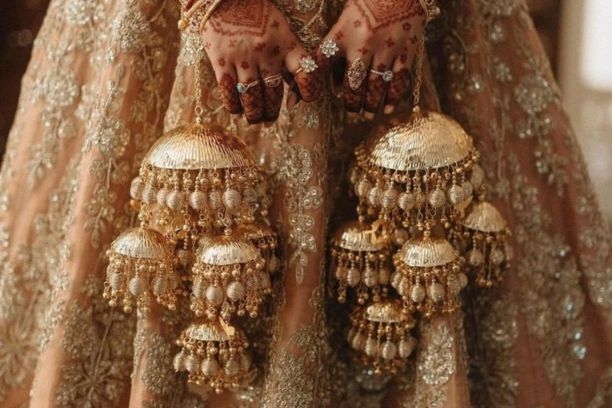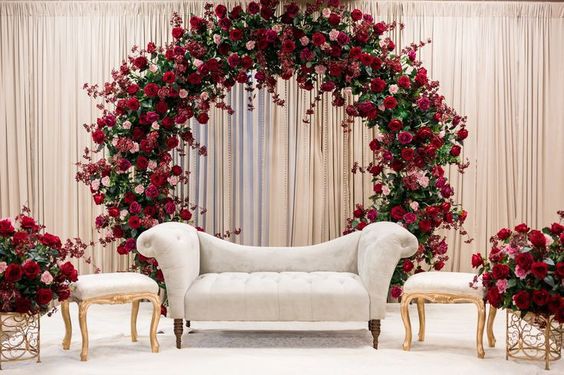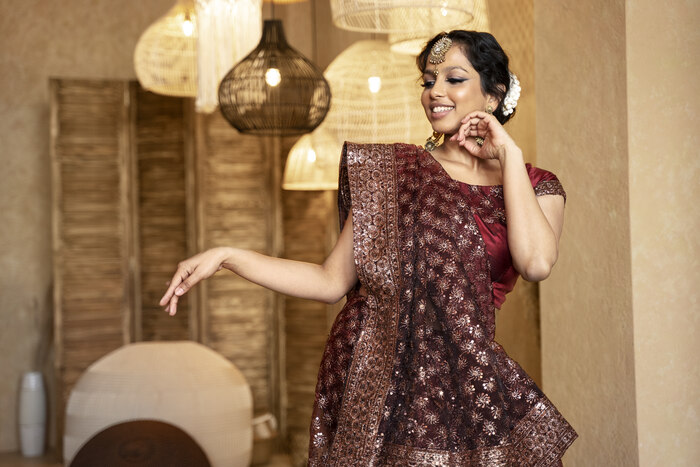Indian weddings are a tapestry of vibrant customs and traditions, each adding its unique charm to the auspicious occasion. Among these, the 7 Jaw-Dropping Indian Wedding Traditions You’ve Never Heard Of! stand out, offering a glimpse into the rich cultural heritage of the subcontinent. Let’s embark on a journey to uncover these fascinating rituals that make Indian weddings truly unforgettable.
The Mehendi Ceremony
Mehendi, or henna application, is an integral part of Indian weddings, symbolizing love, prosperity, and the bond between the couple. The intricate designs are applied to the bride’s hands and feet, with hidden initials or motifs representing the groom’s name, adding an element of anticipation and romance to the ceremony.
Baraat: The Groom’s Grand Entrance
The baraat is a jubilant procession where the groom, accompanied by his family and friends, makes a grand entrance to the wedding venue. Amidst lively music and dancing, the groom rides a decorated horse or arrives in a luxurious car, heralding the joyous celebration that awaits.
Mangalsutra: Sacred Symbol of Matrimony
The mangalsutra holds profound significance in Hindu weddings, symbolizing the marital bond and the commitment of the groom to the bride. Comprising black beads strung together on a gold chain, it is a timeless emblem of love and protection.
Saptapadi: Seven Steps to a Blissful Union
During the saptapadi, the couple takes seven steps together, each step representing a vow towards building a harmonious and prosperous life. These vows encompass aspects such as love, commitment, friendship, mutual respect, and understanding, laying the foundation for a blissful union.
Joota Chupai: Hiding the Groom’s Shoes
A playful tradition during Indian weddings is joota chupai, where the bride’s relatives playfully steal the groom’s shoes during the ceremony. In exchange for their return, the groom must offer a ransom, adding a lighthearted element of fun and camaraderie to the festivities.
Haldi Ceremony: Turmeric’s Blessings
The haldi ceremony is a ritual where turmeric paste is applied to the bride and groom’s bodies, signifying purification and blessings for their married life. The golden hue of turmeric symbolizes auspiciousness, prosperity, and the radiant glow of the couple’s future together.
Sindoor: Symbol of a Married Woman
The application of sindoor, a red vermilion powder, in the parting of the bride’s hair is a sacred tradition in Hindu weddings, symbolizing her marital status and devotion to her husband. It is believed to bring good fortune and protect the couple’s bond.
Sehra Bandi: Groom’s Veil Tying Ceremony
In North Indian weddings, the sehra bandi is a ritual where the groom’s face is veiled with a decorative garland or cloth before proceeding to the wedding ceremony. This symbolizes his readiness to enter into wedlock and his commitment to protect his bride.
Varmala: Exchanging Garlands of Love
The varmala ceremony marks the exchange of floral garlands between the bride and groom, signifying their acceptance of each other as life partners. As they adorn each other with fragrant blooms, they express their love, respect, and willingness to embark on the journey of marriage together.
Conclusion
Indian wedding traditions are a testament to the richness of culture, the warmth of family bonds, and the beauty of love and commitment. From the intricate patterns of mehendi to the joyous celebrations of the baraat, each tradition adds its unique flair to the auspicious occasion, creating memories that last a lifetime.
FAQs
- What is the significance of the Mehendi ceremony? The Mehendi ceremony symbolizes love, prosperity, and the bond between the couple. It is believed to bring good fortune and blessings to the bride and groom as they embark on their journey together.
- Why is the mangalsutra considered sacred in Indian weddings? The mangalsutra holds profound significance as it symbolizes the marital bond and the commitment of the groom to the bride. It is believed to protect the couple’s union and bring them happiness and prosperity.
- What are the seven vows taken during the Saptapadi ceremony? During the Saptapadi ceremony, the couple takes seven steps together, each step representing a vow towards building a harmonious and prosperous life. These vows encompass aspects such as love, commitment, friendship, mutual respect, and understanding.
- Why is sindoor applied by married women in Hindu culture? Sindoor is applied by married women in Hindu culture as a symbol of their marital status and devotion to their husbands. It is believed to bring good fortune and protect the sanctity of the marital bond.
- What is the significance of the haldi ceremony in Indian weddings? The haldi ceremony is a ritual of purification and blessings for the bride and groom. The turmeric paste applied to their bodies is believed to ward off evil spirits, bring good luck, and impart a radiant glow for their married life.
- Why is the joota chupai ceremony conducted during Indian weddings? The joota chupai ceremony adds a playful element to Indian weddings, symbolizing the bride’s family’s acceptance of the groom into their fold. It fosters camaraderie and laughter among the two families, creating cherished memories for the newlyweds.

